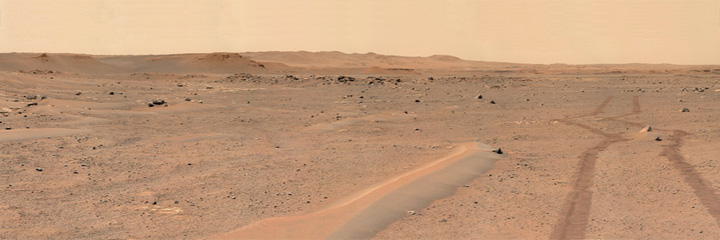Photo: This image is a cropped version of a panorama made by Thomas Appéré from 82 photos taken by the Mastcam-Z Right camera on the head of the Perseverance rover on sol 114 (June 15, 2021) at 12:40 p.m. local Martian time. The Perseverance rover is heading towards Séítah, a region with sandy ripples. Credit: NASA/JPL-Caltech/MSSS/ASU/Thomas Appéré.
Documentary sources, articles, databases:
Wikipedia |
USGS |
IAU |
Nasa |
MSSS
All the documents presented here are linked to their owners on their respective official site. ©Ifik |
Contact
